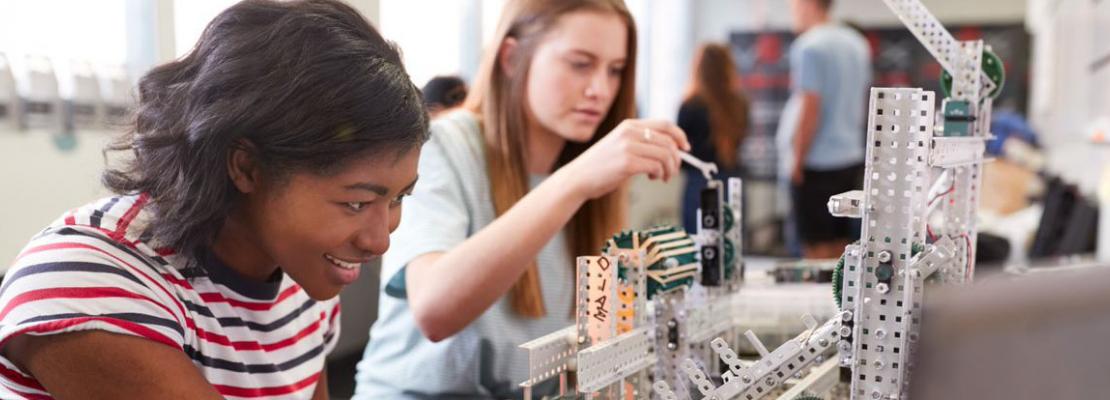During their K-12 education, girls’ and young women’s achievement in mathematics and science is on par with that of boys and young men, and young women participate in high level STEM courses at similar rates as young men, except for advanced physics and computer science.
STEM Achievement
- In general, female and male students perform equally well in mathematics and science on standardized tests, but larger gaps exist between students of different racial and ethnic backgrounds or family income, with white and Asian/Pacific Islander students and those from higher income families scoring higher than their counterparts who are Black, Hispanic, or American Indian/Alaska Native or who are from lower income families.
- There are potentially many contributing factors to these gaps, including lack of access to high-quality STEM instruction and structural and systemic educational and societal inequities that affect students’ educational experiences and performance (Bowman, Comer, and Johns 2018; Hanushek et al. 2020; Pearman 2020; Reardon, Kalogrides, and Shores 2019).
Source: National Science Board, National Science Foundation. 2021. Elementary and Secondary STEM Education. Science and Engineering Indicators 2022. NSB-2021-1. Alexandria, VA. Available at https://ncses.nsf.gov/pubs/nsb20211/
STEM Interest
- Girls and young women are interested in STEM and participate in STEM courses at high rates. However, young women report less interest in pursuing STEM careers than young men.
- Forty-five percent of high school seniors aspire to a STEM career, but a gender gap exists. Twenty-eight percent of young women report aspiring to a STEM career compared to 65% of young men.
Source: Student Research Foundation https://www.studentresearchfoundation.org/research/stem/
Coursetaking
- In 2019, about 44 percent of female high school graduates completed a precalculus, statistics, or trigonometry course as their highest level of mathematics, a higher percent compared to the 38 percent of male graduates who completed a precalculus, statistics, or trigonometry course as their highest level of mathematics.
- For high school graduates who have calculus as their highest level course in 2019, no significant gender gap exists, with 16 percent of both male and female graduates completing a calculus course.
- The percentage of female high school graduates in 2019 earning credits in advanced science courses increased to 36 percent compared to 24 percent in 2009, while the percentage of male graduates increased to 29 percent in 2019 compared to 21 percent in 2009.
- In 2019, a higher percentage of male graduates took first-year physics courses as their highest level science when compared to female graduates. Conversely, a higher percentage of female graduates took first-year chemistry courses as their highest level science course than male graduates. These gender gaps for chemistry and physics have persisted over all reported years.
- In 2019, about 91 percent of female high school graduates earned credits in STEM advanced mathematics courses, a higher percent compared to the 88 percent of male graduates who earned credits in STEM advanced mathematics courses.
- In 2019, about 90 percent of female high school graduates earned credits in STEM advanced science and engineering courses, 3 percentage points higher compared to male graduates.
- In 2019, about 41 percent of male high school graduates earned credit in STEM-related technical courses, a higher percent compared to the 37 percent of female graduates who earned credit in STEM-related technical courses.
Source: U.S. Department of Education, Institute of Education Sciences, National Center for Education Statistics, National Assessment of Educational Progress (NAEP) High School Transcript Study, 2019. Available at https://www.nationsreportcard.gov/
